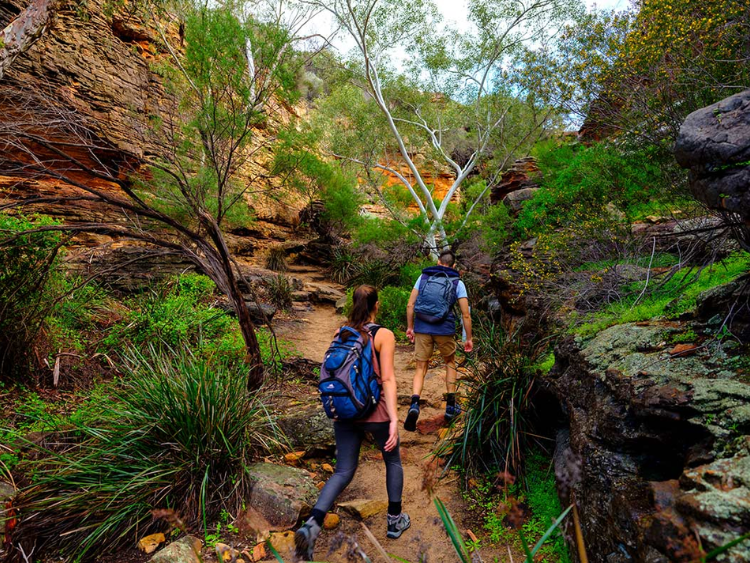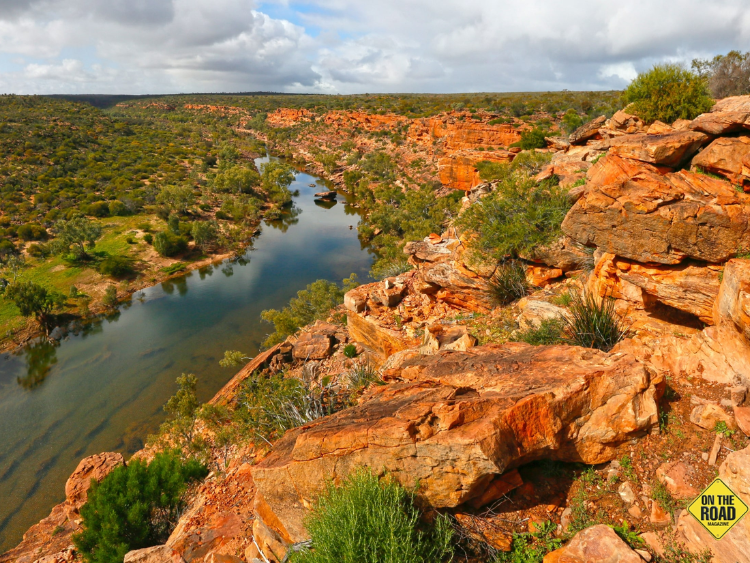
Kalbarri National Park is located in Western Australia, about 485 kilometers north of Perth. It is known for its stunning coastal cliffs, river gorges, and diverse wildlife, making it a popular destination for nature enthusiasts and adventurers.
Kalbarri National Park covers an area of about 186,000 hectares and is situated along the coast of the Indian Ocean. The Murchison River runs through the park, carving out spectacular gorges and forming stunning landscapes. The park offers a range of activities such as bushwalking, birdwatching, canoeing, and scenic drives, allowing visitors to explore its natural beauty and diverse ecosystems. It's also famous for its wildflowers, which bloom in abundance during the spring months, attracting visitors from around the world.

Kalbarri National Park was established in 1963 to protect the unique landscapes and ecosystems found in the region.
The park was officially gazetted as Kalbarri National Park in 1963, but its history as a protected area dates back further. It was originally designated as a nature reserve in 1948, highlighting the importance of preserving its natural beauty and ecological significance. Over the years, the park has become a popular destination for tourists and locals alike, attracting visitors with its stunning landscapes, diverse wildlife, and recreational opportunities.

Kalbarri National Park was not "invented" by a single person; rather, it was established through the efforts of various stakeholders, including government officials, conservationists, and local communities. The decision to establish the park was made to protect the unique natural landscapes and ecosystems found in the Kalbarri region of Western Australia. The creation of national parks typically involves legislative processes and the dedication of land for conservation purposes, often driven by a recognition of the ecological, cultural, and recreational values of the area.


The name "Kalbarri" is said to be derived from the Aboriginal word "Galgarr" or "Galgurri," which refers to a part of the Murchison River. This river flows through the national park and has played a significant role in shaping the landscapes within the area. The Aboriginal name was later anglicized to "Kalbarri," which is now used for both the town and the national park. This naming reflects the indigenous heritage of the region and acknowledges the cultural significance of the Murchison River to the local Aboriginal people.





Kalbarri National Park is a paradise for hiking lovers due to its diverse and stunning landscapes, offering a variety of trails suitable for all skill levels. Here's why it's such a fantastic destination for hikers:
1. **Spectacular Gorges:** The park is renowned for its breathtaking river gorges, including the iconic Z Bend and Nature's Window. Hiking along the rim of these gorges provides awe-inspiring views of the rugged cliffs and the meandering Murchison River below.
2. **Coastal Trails:** Kalbarri National Park also boasts picturesque coastal cliffs and sandy beaches. Hikers can explore trails that wind along the coastline, offering panoramic views of the Indian Ocean and opportunities to spot marine life such as dolphins and whales during the migration season.
3. **Scenic Lookouts:** The park is dotted with scenic lookouts that offer panoramic vistas of the surrounding landscapes. These viewpoints provide perfect spots for hikers to rest, take photos, and appreciate the natural beauty of the park.
4. **Varied Terrain:** Hiking trails in Kalbarri National Park traverse a range of terrains, including rocky cliffs, sandy riverbanks, and bushland. This diversity allows hikers to experience different ecosystems and landscapes within a relatively small area.
5. **Wildlife Watching:** The park is home to a variety of wildlife, including kangaroos, emus, and a wide array of bird species. Hikers may encounter these animals along the trails, adding to the immersive nature experience.
6. **Trail Options:** Whether you're seeking a short, easy stroll or a challenging full-day hike, Kalbarri National Park offers trails of varying lengths and difficulty levels. This makes it suitable for hikers of all ages and fitness levels.
Overall, Kalbarri National Park's combination of stunning scenery, diverse trails, and abundant wildlife makes it an ideal destination for hiking enthusiasts looking to immerse themselves in nature and explore the beauty of Western Australia's wilderness.






While Kalbarri National Park is indeed a fantastic hiking destination year-round, the best time to visit may depend on your preferences and the activities you wish to enjoy:
1. **Spring (September to November):** Spring is an excellent time to visit Kalbarri National Park for hiking, especially if you're interested in seeing wildflowers. The park bursts into bloom during this time, with vibrant displays of colorful flowers carpeting the landscapes. The weather is generally pleasant, making it ideal for outdoor activities.
2. **Autumn (March to May):** Autumn is another great season for hiking in Kalbarri National Park. The temperatures start to cool down after the hot summer months, making it more comfortable for outdoor activities. The park may be less crowded during this time, allowing for a more serene hiking experience.
3. **Winter (June to August):** Winter in Kalbarri can be cooler, with occasional rainfall. While the temperatures may not be as warm as other seasons, hiking is still possible, especially during dry spells. Winter is also a good time for whale watching along the coast, as humpback whales migrate north from June to August.
4. **Summer (December to February):** Summer can be hot in Kalbarri, with temperatures often exceeding 30┬░C (86┬░F). While hiking is still possible, it's essential to take precautions such as carrying plenty of water, wearing sun protection, and avoiding hiking during the hottest parts of the day. Swimming in the Murchison River or along the coast can provide a refreshing break from the heat.
Overall, Kalbarri National Park offers hiking opportunities throughout the year, but the best time to visit may depend on your preferences for weather, wildflower viewing, and crowd levels. Regardless of the season, always check weather forecasts and park conditions before embarking on any hiking adventures.